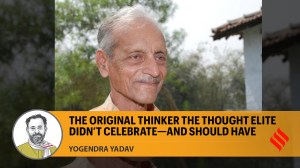Chaos, quite Himalayan
India’s Nepal policy can be summed up in just one word: confused. Perhaps one reason for this is our close proximity to the Himalayan k...

India’s Nepal policy can be summed up in just one word: confused. Perhaps one reason for this is our close proximity to the Himalayan kingdom — both geographically and historically. It seems to rob us of perspective. An additional factor has contributed to queering the pitch. Various constituents of the present government seem to have differing views on the stance India should adopt towards Nepal. The Left parties have been particularly vocal about the undesirability of India resuming the supply of military aid to the kingdom. The UPA government itself had suspended assistance to the Royal Nepal Army in protest against King Gyanendra’s anti-democratic behaviour and human rights violations. It then seemed to have second thoughts and agreed in mid-April to resuming the supply of arms. Later, under fire from its Left allies and after observing King Gyanendra’s own lethargy in restoring democracy, this was modified to the supply of “non-lethal material”. Similar confusion seemed to have marked the recent visit of the Nepali Maoist leader, Baburam Bhattarai, to India, and his supposed meeting with the CPM general secretary, which was later denied.
What we need at this moment is some coherence on Nepal, some evidence of a unity of command, some inkling of a logical, well-thought-out approach. We have a road map on how to proceed on the issue in the MEA’s own formulation that India believes stability in Nepal is crucially dependent on the restoration of a constitutional monarchy and multi-party democracy. It follows from this that India should be working towards persuading the king to revive democratic activity in Nepal through the restoration of the constituent assembly.
India has always condemned Maoist violence in Nepal and continues to do so. On this there is no dissembling. Nepal is wrong if it reads a significant shift in India’s thinking on the issue. After all, this country too has a stake in seeing an end to the reign of Maoist terror in Nepal because of the well-documented links between the groups in that country and those operating on its own soil. From all evidence, there are serious schisms in the Maoist leadership in Nepal and it makes sense to engage with those factions more amenable to laying down their arms and entering into a dialogue process. Years of insurgency in Nepal have proved beyond reasonable doubt that the way out of it does not lie in a purely military solution. Now it is over to the king.






- 015 hours ago
- 0214 hours ago
- 0315 hours ago
- 045 hours ago
- 0514 hours ago

























